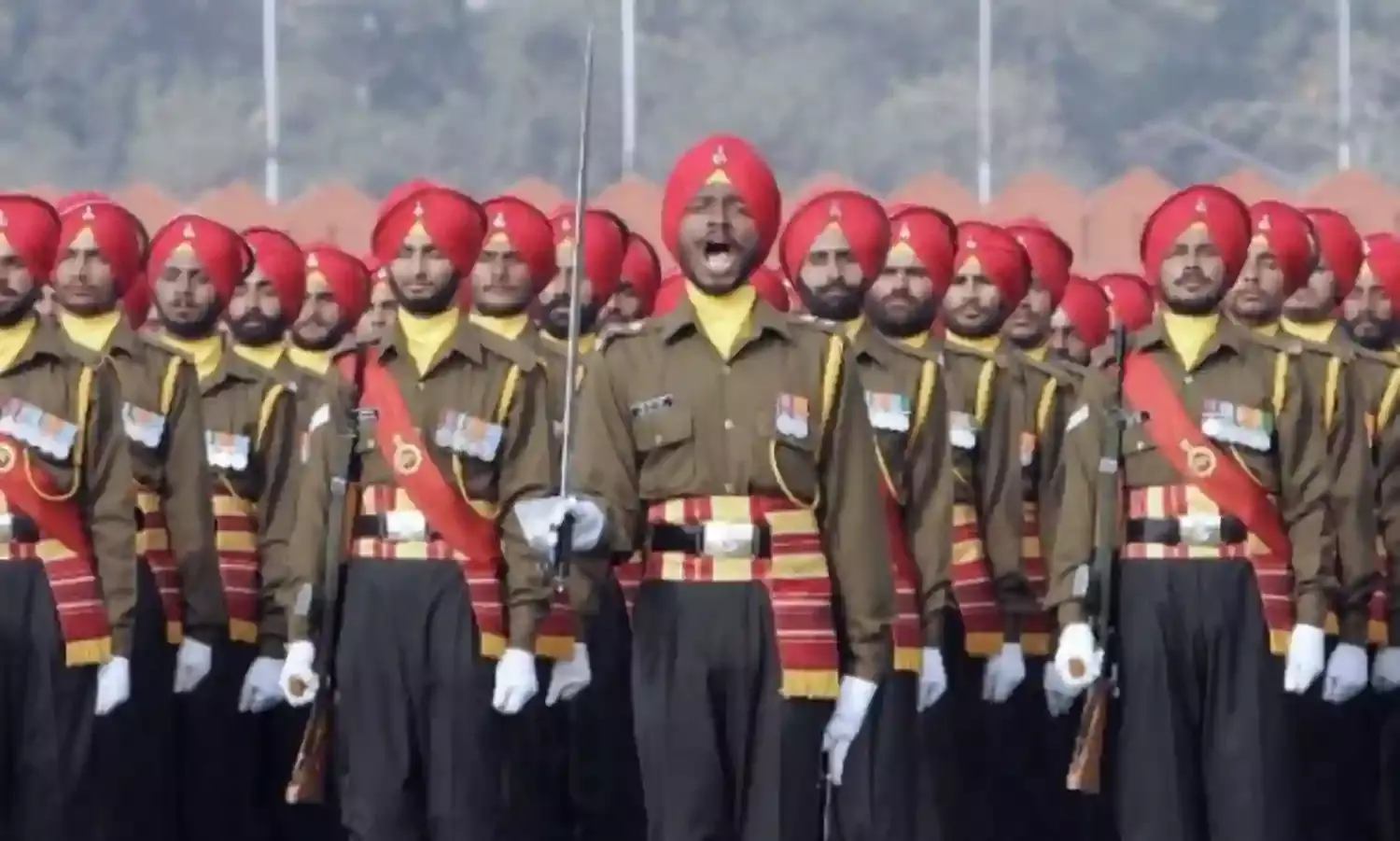Sikhs Are True Patriots
This is not a race that disparages its own flag, or is led by those who run away

My baptism to the concept of fidelity and valour as a defender of the Faith and ‘Flag’ was literally by fire in the 1965 Indo-Pak War. The Faith and Flag were simply, India.
Joining the illustrious 17th Battalion (‘Barhe Chalo’) of the fiery Rajput Regiment, hand raised by no less than the Field Marshal K.M Cariappa himself as the first Commanding Officer of this fine paltan, remains a personal honour. By the time 1965 war started, Kipper or Field Marshal K.M Cariappa had hung his uniform after a distinguished career and the paltan’s command had passed on to a strapping six-footer who was built like a tank, had a booming voice, earthy wisdom, and penchant for a garrulous laugh – Col. J.S Gill (affectionately called ‘Baba Gill’ for his fatherly ways, with all under his command).
Almost 60 years to those times, even today I’d gladly walk into the line of fire if the gentle giant were to order me to do so. Such was our reverence to the barrel-chested colossus, who evoked utmost loyalty. The raring soldiers knew they had an alpha leader and not just a Commanding Officer leading them. The simple but hardy Rajput soldiers from the dust bowl districts of the hinterland could give their life to ‘Baba Gill’s’ command, and many did.
Even as 20-year-old subalterns, we were conversant with the freight, weight and import of the veritable ‘Flag’. After all, we had sworn an oath to defend and had taken commission with our hands stretched out, on one.
The concept of territorial integrity or sovereignty were way too esoteric to fully comprehend at that age, so ‘Baba Gill’ had inadvertently taught us to fight simply for the ‘flags’. The metaphorical flags were those of the nation (Tiranga), Maroon Rajput Regimental flag or even the more personalised Regimental Flag with our paltan’s honours etched and earned by our illustrious forefathers.
These sacred flags are reflected in the last-but-not-the-least trinity of Naam, Namak, Nishaan on which Indian soldering is predicated. The Nishaan therein symbolises the denominations of the paltan, formation, service or the nation.
Our burly Sikh, ‘Baba Gill’ was just one amongst the countless Khalsas who live, breathe, and die willingly for the dignity of the nation in the Indian Armed Forces, which above all is manifested and vested in the Tiranga! They have done so since antiquity and Punjab as a State and the Sikh community in specific, has given a disproportionate share of its blood and sacrifice for ensuring that the Tiranga flies, eternally.
Like all citizenry that has justifiable grouses against perceived discrimination, injustices and even inequities, Punjab too has had throes of societal unrest that the time-serving politicians abused towards insurgent mores. But thankfully the State bounced back with its irrepressible ‘Chardi Kala’ (eternal optimism) spirit that besets its culture and restored itself to normalcy. Punjab limped back to normalcy not because of its politicians, but despite them.
Today, yet again the recurring attempts of polarisation, disparagement, and unaddressed concerns (with snide allusions to ‘Khalistani’ innuendoes onto anyone raising any concerns) ignited the almost finished secessionist sentiments. Shameful acts like attempting to disrespect the Tiranga (which has been underwritten by the unparalleled gallantry of the likes of Shaheed Bhagat Singh and so many subsequent Sikh warriors of ‘India’) was sought to be sullied by an ignorant and bigoted few, who clearly have no sense of Sikh fidelity and sacrifice, to the same.
This small-spirited and strange movement led by those who visibly ‘cut-and-run’ – which is essentially an anathema to the glorious Sikh history and tradition that prides on fighting to the last man standing. Be it Maharaja Ranjit Singh’s exploits, the heroics of Battle of Saragarhi or even the embarrassingly long list of unsung heroes from Punjab that feature in martyrs list at the Cellular Jail of the proverbial ‘Kaala Paani’, Andaman & Nicobar Islands.
These fearless Sikh warriors with the prayers of their inviolable faith on their lips, walked into the line of fire or onto the gallows to protect the metaphorical ‘Flag’. These thoroughbred Khalsas did not ‘escape’, run-away or renege on their words, and the proud community is such that anyone who does so cannot claim to represent the community or the leadership of its concerns.
This is a band of warriors about whom Maj Gen Fazal Muqeem Khan (author of ‘Pakistan’s Crisis of Leadership’) notes, “The major reasons for our defeat are Sikhs. We are simply unable to do anything before them despite our best efforts. They are very daring people and are fond of martyrdom. They fight courageously and are capable of defeating an army much bigger than them”.
This is not a race that seeks to disparage its own flag, or be led by those who run away. I have no doubts that my personal epitome of a noble Sikh warrior, ‘Baba Gill’, would certainly not have approved of this lot, the standards of such warriors, were, are, and will always be, unmatched. About them the Nobel Laureate Rabindranath Tagore had movingly described Banda Singh Bahadur as ‘singher moto shrinkhalgato’ or lion in shackles, that is who, what and why the real Sikhs are, the way they are.
Lt General Bhopinder Singh (Retd), is the Former Lt Governor of Andaman & Nicobar Islands and Puducherry. Views expressed are the writer’s own.



